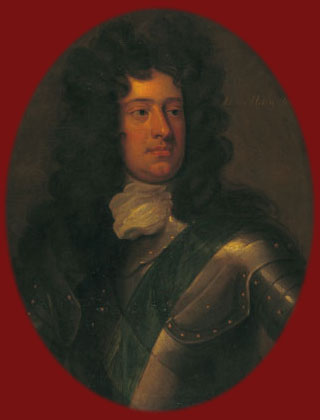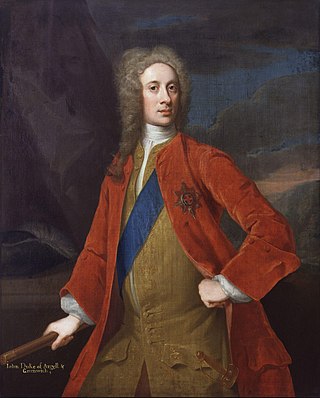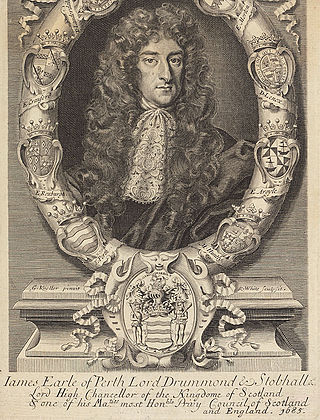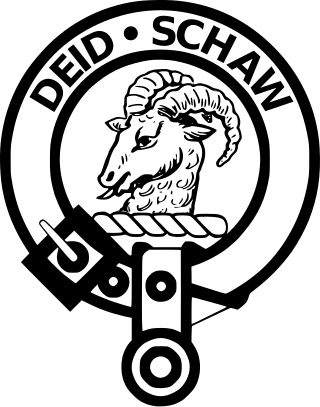| |||||
| Centuries: | |||||
|---|---|---|---|---|---|
| Decades: | |||||
| See also: | List of years in Scotland Timeline of Scottish history 1701 in: England • Wales • Elsewhere | ||||
Events from the year 1701 in the Kingdom of Scotland .
| |||||
| Centuries: | |||||
|---|---|---|---|---|---|
| Decades: | |||||
| See also: | List of years in Scotland Timeline of Scottish history 1701 in: England • Wales • Elsewhere | ||||
Events from the year 1701 in the Kingdom of Scotland .
Date unknown

The House of Stuart, originally spelt Stewart, was a royal house of Scotland, England, Ireland and later Great Britain. The family name comes from the office of High Steward of Scotland, which had been held by the family progenitor Walter fitz Alan. The name Stewart and variations had become established as a family name by the time of his grandson Walter Stewart. The first monarch of the Stewart line was Robert II, whose male-line descendants were kings and queens in Scotland from 1371, and of England, Ireland and Great Britain from 1603, until 1714. Mary, Queen of Scots, was brought up in France where she adopted the French spelling of the name Stuart.

Duke of Atholl, named for Atholl in Scotland, is a title in the Peerage of Scotland held by the head of Clan Murray. It was created by Queen Anne in 1703 for John Murray, 2nd Marquess of Atholl, with a special remainder to the heir male of his father, the 1st Marquess.

Lieutenant-General James Hamilton, 4th Duke of Hamilton and 1st Duke of Brandon, KG, KT was a Scottish nobleman, soldier and politician. Hamilton was a major investor in the failed Darien Scheme, which cost many of Scotland's ruling class their fortunes. He led the Country Party in the Parliament of Scotland and the opposition to the Act of Union in 1707. He died on 15 November 1712 as the result of a celebrated duel in Hyde Park, Westminster, with Charles Mohun, 4th Baron Mohun, over a disputed inheritance.

Field Marshal John Campbell, 2nd Duke of Argyll, 1st Duke of Greenwich,, styled Lord Lorne from 1680 to 1703, was a Scottish nobleman and senior commander in the British Army. He served on the continent in the Nine Years' War and fought at the Battle of Kaiserwerth during the War of the Spanish Succession. He went on to serve as a brigade commander during the later battles of the War of the Spanish Succession. Next he was given command of all British forces in Spain at the instigation of the Harley Ministry; after conducting a successful evacuation of the troops from Spain, he became Commander-in-Chief, Scotland. During the Jacobite Rebellion, he led the government army against the Jacobites led by the Earl of Mar at the Battle of Sheriffmuir. He went on to serve as Lord Steward and then Master-General of the Ordnance under the Walpole–Townshend Ministry.
The Peerage of the United Kingdom is one of the five Peerages in the United Kingdom. It comprises most peerages created in the United Kingdom of Great Britain and Ireland after the Acts of Union in 1801, when it replaced the Peerage of Great Britain. New peers continued to be created in the Peerage of Ireland until 1898.

Earl of Carlisle is a title that has been created three times in the Peerage of England.
Lord Ruthven of Freeland is a title in the Peerage of Scotland. It was created in 1651 for Thomas Ruthven. He was the grandson of Alexander Ruthven, younger son of William Ruthven, 2nd Lord Ruthven. The letters patent creating the peerage is said to have been burnt with the House of Freeland in 1750, and the remainder to the peerage is not accurately known. However, as the dignity was retained on the Union Roll, it has been presumed that the honour was to heirs-general. Lord Ruthven of Freeland was succeeded by his son, the second Lord. He never married and on his death in 1722 the title and estates devolved by entail upon his youngest sister, Jean. On her death the estates passed to her nephew Sir William Cunningham, 3rd Baronet, of Cunninghamhead. He was the only son of Anne, elder sister of the third Lady Ruthven and also heir of line. He assumed the surname of Ruthven upon the death of his aunt, but lived only six months after his accession to the estates and never assumed the title.

Earl of Gowrie is a title that has been created twice, once in the Peerage of Scotland and once in the Peerage of the United Kingdom, both times for members of the Ruthven family. It takes its name from Gowrie, a historical region and ancient province of Scotland. On 23 August 1581, William Ruthven, 4th Lord Ruthven, was created Earl of Gowrie by James VI, King of the Scots. He was executed for high treason, attainted and his peerages forfeited on 28 May 1584. Two years later in 1586, the attainder was reversed and his son, the second Earl, was restored as Earl of Gowrie and Lord Ruthven, but both peerages were forfeited after the alleged plot and subsequent death of the second Earl's younger brother, the third Earl, in 1600.

Earl of Darnley is a hereditary title that has been created three times, twice in the Peerage of Scotland and once in the Peerage of Ireland.

James Drummond, 1st Duke of Perth, KT, PC, also 4th Earl of Perth and 7th Lord Drummond, was a Scottish statesman, and Jacobite.

Earl of Hyndford was a title in the Peerage of Scotland. It was created in 1701 for John Carmichael, 2nd Lord Carmichael, Secretary of State from 1696 to 1707. He was made Lord Carmichael and Viscount of Inglisberry and Nemphlar at the same time, also in the Peerage of Scotland. He was the grandson of James Carmichael, who had been created a Baronet, of Westraw in the County of Lanark, in the Baronetage of Nova Scotia in 1627, and raised to the Peerage of Scotland as Lord Carmichael in 1647. The third Earl was a prominent diplomat. The titles became dormant on the death of the sixth Earl in 1817, and were later unsuccessfully claimed by James Carmichael Smyth and his great-grandson James Morse Carmichael.

Ludovic Stewart, 2nd Duke of Lennox and 1st Duke of Richmond, lord of the Manor of Cobham, Kent, was a Scottish nobleman who through their paternal lines was a second cousin of King James VI of Scotland and I of England. He was involved in the Plantation of Ulster in Ireland and the colonization of Maine in New England. Richmond's Island and Cape Richmond as well as Richmond, Maine, are named after him. His magnificent monument with effigies survives in Westminster Abbey.

The Clan Ruthven is a Lowland Scottish clan.
Lord Ruthven may refer to:

Alexander Stuart, 5th Earl of Moray, was a Scottish peer who held senior political office in Scotland under Charles II and his Catholic brother, James II & VII.
Events from the year 1706 in the Kingdom of Scotland.
Events from the year 1704 in the Kingdom of Scotland.
Events from the year 1703 in the Kingdom of Scotland.
Events from the year 1702 in the Kingdom of Scotland.
Events from the year 1700 in the Kingdom of Scotland.